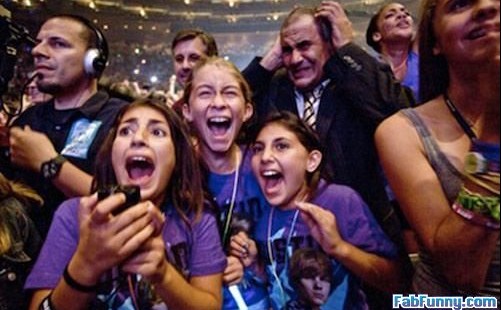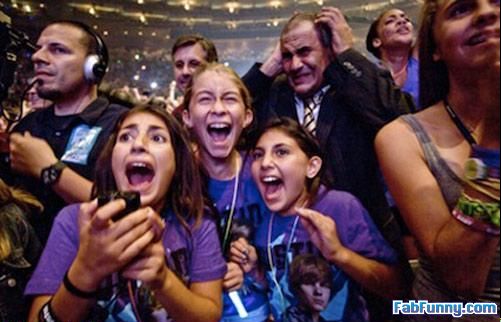
The Traffic In Men?
This week, my graduate feminist theory class read Gayle Rubin’s classic article “The Traffic In Women.” We considered whether and how men could be trafficked—i.e., how men might be used as the medium for relations among other men. Rubin argues that men are certainly trafficked, but never as men: they might be trafficked as black, as proletariat, etc., but, at least in Rubin’s view, men never use other men’s maleness or masculinity as the media through which they transact their relations amongst themselves. In Rubin’s framework, it is as men that one transacts others: as a man, one is endowed with agency and subjectivity. If a man is to be the object of trafficking, he cannot be regarded as a man. So, in Rubin’s view, men are transacted, but never as men, because it is as a man that one is situated, vis-à-vis others, as a trader and not chattel.Trading women as women is what makes men, men.
Obviously Rubin’s original analysis is a very blunt instrument. It can’t account for the fact that even when men are traded as, for example, members of a certain race, class, religion, subculture, or alternative embodiment, their gender never just goes away. In fact, the trafficking in blackness that we see in American pop music aesthetics is a trafficking in black masculinity; similarly, black athletes are trafficked as black men. White/Western men traffic non-white, non-Western men, as men whose masculinity is qualified by their race and/or nationality. White Western traffic in “abnormal” masculinities: e.g., Puar’s “queer terrorist masculinities”.
But what about men being trafficked as men in order to facilitate relations among women? Does this ever happen? Rubin seems to dismiss this possibility outright: if patriarchal sex/gender systems are predicated (in large part) on “the exchange of women,” how could patriarchy tolerate such a role reversal?
Well, it happens, and while capitaltolerates it (b/c it’s all just exchange value in the end), culture does not. The best example of women’s “exchange of men” as men is the teen pop idol: Justin Bieber, The Jonas Brothers, N’Synch, NOKTB, WHAM!, Shaun Cassidy, The Beatles, etc. Teen girls use the myth, image, fantasy, construction, etc., of their chosen Idol as the means and medium to transact relationships with other female fans. This goes beyond basic commodity fetishism—it’s not just different groups of girls establishing their identities vis-à-vis the idols they identify with (e.g., the popular/mainstream girls like Beiber, the b-girls like Soulja Boy, etc.). Rather, fan communities coalesce around these “idols,” and it is in these fan communities that girls develop friendships; they go to shows with other fans, they trade pictures, articles, interviews, remixes, they brag about the exclusive schwag they bought, etc. The ostensible content of these fangirls’ activities is focused on the teen idol, but the real point is the, uh, female homosociality. Judith Jack Halberstam gestures towards this idea in her reading of riot grrrl. Halberstam argues:
The phenomenon of boy bands, for me, raises a number of questions not simply about the performance of masculinity but also about what [Gayle] Wald refers to as the threatening aspect of the ‘ecstatic responses that they elicit’. After all, while music critics love to dismiss fandom as a passive teenybopper subculture, there is something all too powerful about a nearly hysterical audience of teen girls screaming and crying together; this activity may well have as much to say about the desire between the screamers as it says about their desire for the mythic boys”(Halberstam 2005, 177; emphasis mine).
Pretty much anyone who is not a teenage girl heavily polices the exchange of men. Teen Idol music is more or less unquestionably, obviously, and uniformly derided as the worstmusical, lyrical, aesthetic, and cultural phenomenon ever. It is considered the quintessence of triviality, badness, etc. It’s supposedly obvious that teen idol music is worse than smooth jazz, worse than Kenny G, worse than muzak. But, musically, it’s not actually that bad. Often, the songs are quite catchy and well-crafted, and the idols themselves are quite good vocalists (e.g. Biebs’s raw talent, his “discovery” via YouTube). So why the obvious, impenetrable, commonsense derision, derogation, and disgust toward teen idol music? Halberstam has it: there is absolutely no way that hegemony can let strong, powerful expressions of female desire articulated on women’s own terms, to say nothing of female homosociality, stand as acceptable. With teen idol music, women use men, as men, to transact relations among themselves, as women. [Ilana Nash’s article in this book is a great explanation of how this works.] This is the opposite of patriarchy. As Halberstam suggests, it’s likely in opposition to hetero-patriarchy. So, heteropatriarchy compromises with capital: teen idol music and fan cultures can exist as profit-making enterprises, but any power, credibility, traction, or relevance they might actually have has to be so thoroughly and completely discounted that the threat of female homosociality/the traffic in men is completely neutralized and domesticated.
So if you think teen pop is transparently, obviously, irrefutably shit, then patriarchy wins. That’s exactly what it wants you to think. Because in thinking this, you deny women’s agency, women’s desires, and women’s attempts to relations among themselves. [Sure, you could object that this happens via the objectification of a boy/dude, but, following Beauvoir, I’m going to argue that objectification isn’t inherently morally flawed. Because we are interdependent, we use others as means. The problem arises when we use others only as means, and the objectification is systematic.] So for all those who bemoan the lack of “political” music these days, know this: some of the most politically radical and threatening music out there comes in the form of “Baby, baby, baby-OOOOOOh.” If it wasn’t so dangerous, why would hegemony be so strongly invested in convincing us it shouldn’t be taken seriously?

Your articles pee t shirt for concert comprehensive signified out of apiece theme.